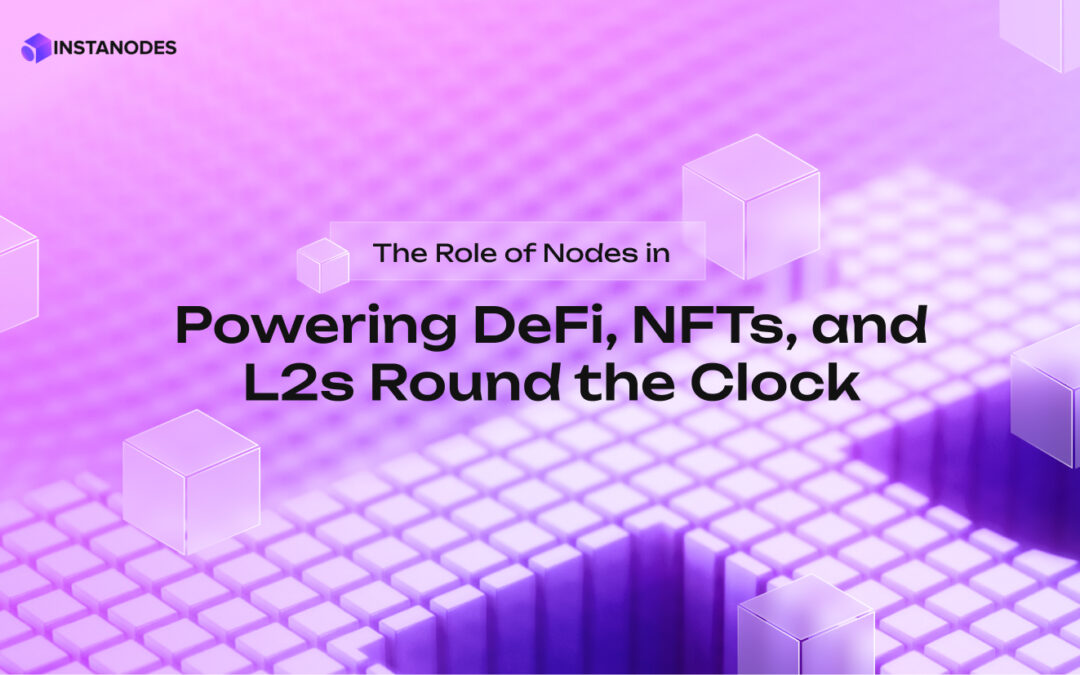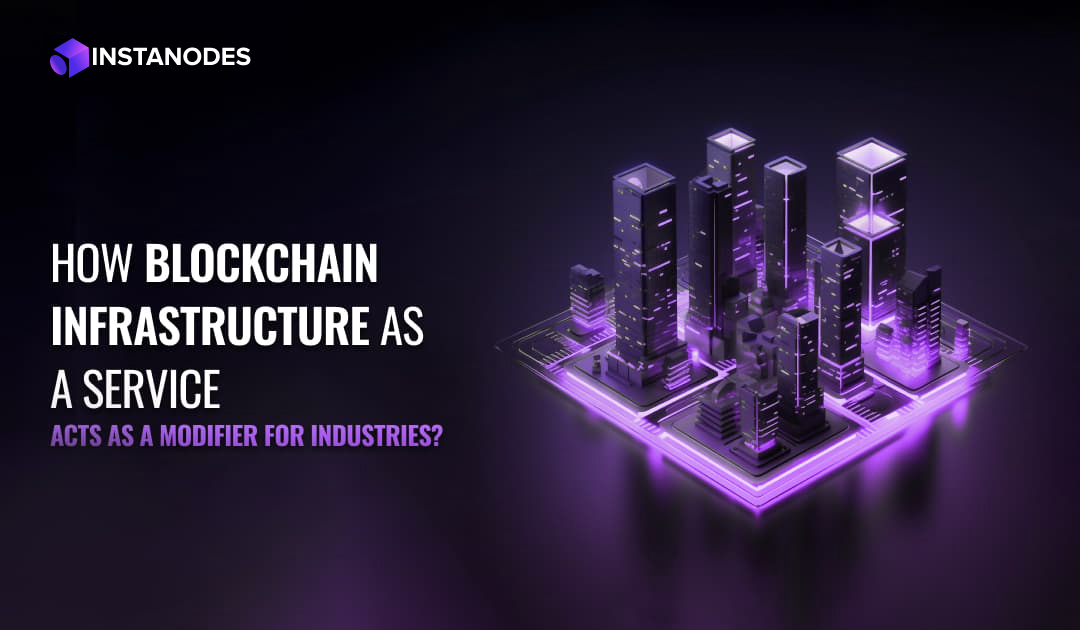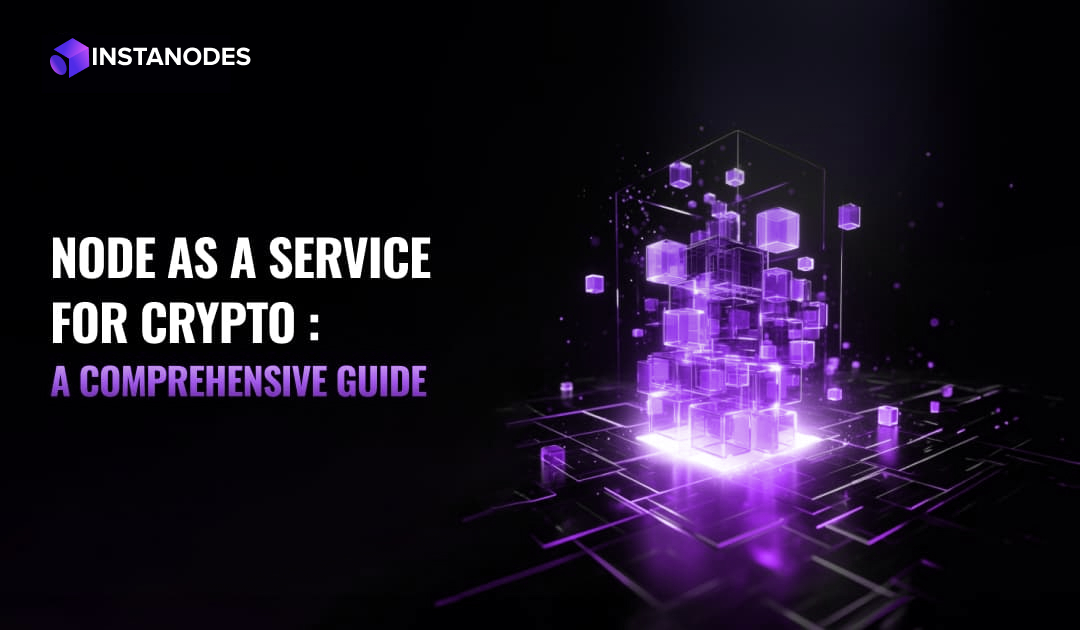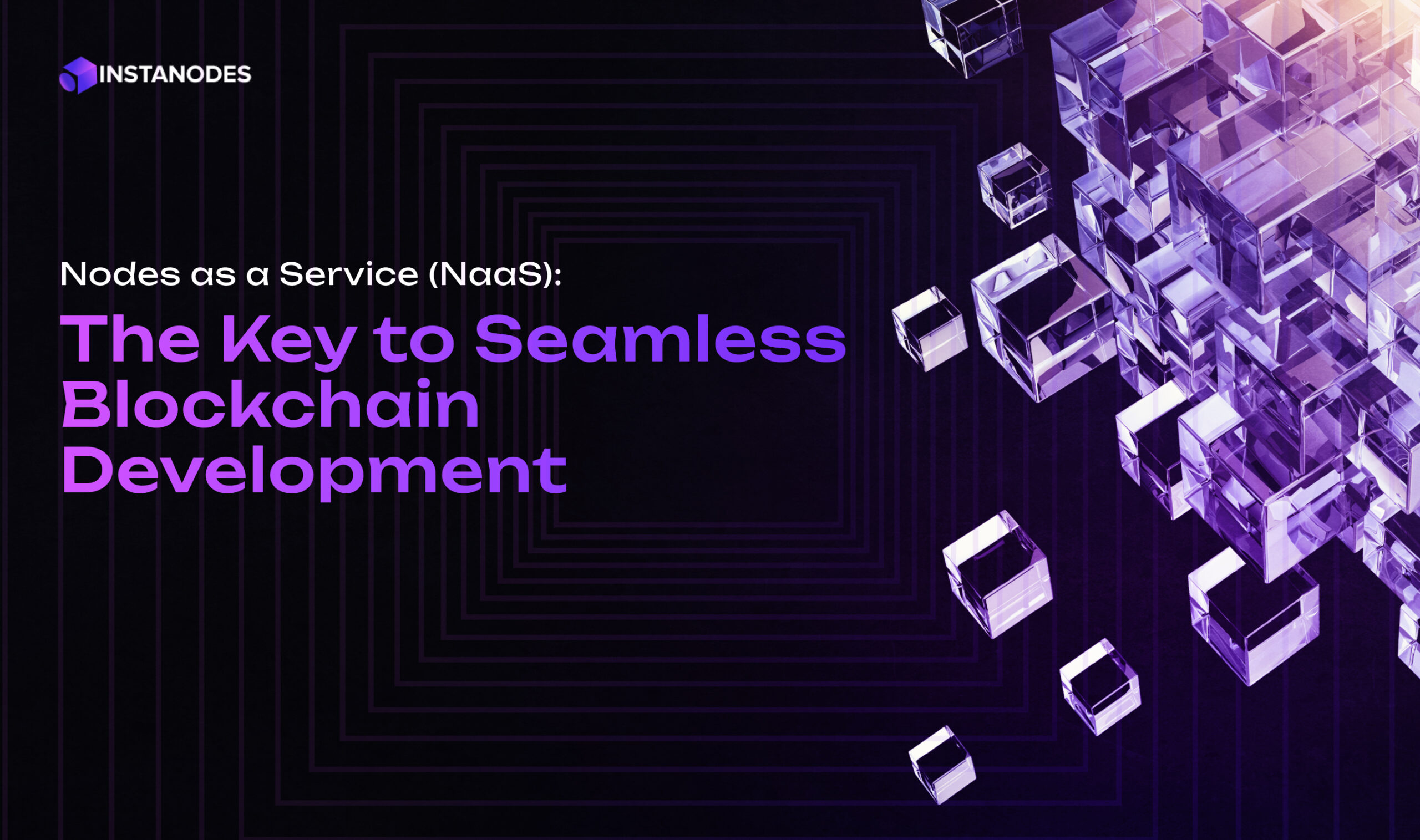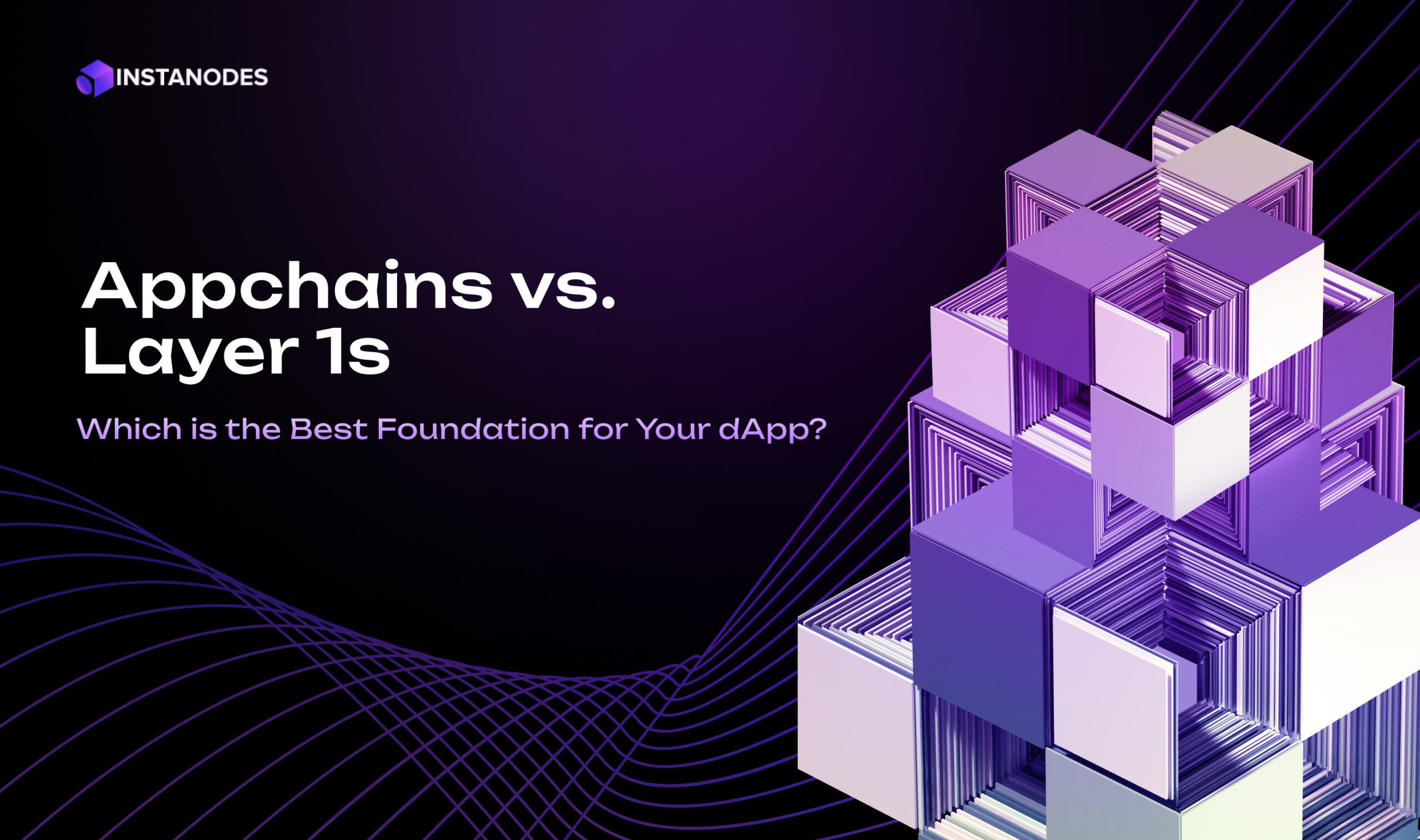Nodes of blockchain are the bricks of blockchain networks, and they are essential for keeping decentralized ecosystems safe, functioning, and indeed decentralized. Nodes power any blockchain use case, whether it is a DeFi use case, an NFT exchange, or a Layer 2 (L2) solution. Because they are the fundamental infrastructure layer, nodes are always online, checking transactions, storing data, and keeping everything working nicely and securely on the network.
Creating the fundamental building blocks of blockchain infrastructure is a time-consuming, tedious, and costly process. This is why there has been an increase in the demand for Node as a Service for the last few years. Rather than having to develop and manage intricate node networks from the ground up, companies can now avail professional services offering hardened, reliable, and scalable node solutions.
Types of Nodes
In the blockchain network, nodes can be classified into several categories:
- Full nodes: Complete versions of the blockchain that authenticate and transmit transactions
- Light nodes: Reduced nodes that confirm transactions without holding the full blockchain
- Mining nodes: Nodes designed to engage in the consensus mechanism
- Validator nodes: Critical for proof-of-stake networks, responsible for transaction validation and network security
Regardless of their role as validator nodes, full nodes, or light nodes, they are responsible for ensuring consensus and preventing fraudulent activity, like double-spending. This robust network of nodes keeps decentralized applications (dApps) running 24/7 with users having easy access and interaction.
Through validation of transactions and maintenance of the blockchain records, nodes offer data availability and security, even during periods of high traffic or network outage. They ensure uninterrupted operation and always-up status for dApps and decentralized platforms.
Understanding Blockchain Node Deployment Models
In plain language, a blockchain node is a computer machine, generally a server or cloud instance, that is part of a blockchain network by maintaining a copy of the common ledger, validating transactions, and sending messages to other nodes for the sake of reaching an agreement.
There are different types of nodes in blockchain, namely, dedicated nodes, semi-dedicated nodes, and shared nodes, and each of them serves different functions.
Dedicated Nodes: The Premium Infrastructure Solution
Dedicated nodes represent the gold standard of blockchain node deployment, offering unparalleled performance and reliability. In this model, an entire physical or virtual server is exclusively allocated to a single client or blockchain network.
Key Characteristics:
- 100% resource allocation
- Maximum performance and low latency
- Complete control over node configuration
- Highest level of security and customization
- Ideal for enterprise-level blockchain applications
Typical Use Cases:
- Large DeFi platforms
- Institutional crypto trading
- High-frequency blockchain applications
- Validators in proof-of-stake networks
Advantages
- Guaranteed resource availability
- Optimal performance
- Enhanced security
- Full customization capabilities
Semi-Dedicated Nodes: Balanced Performance and Cost-Efficiency
Semi-dedicated nodes offer a middle ground between dedicated and shared infrastructure, providing a segmented approach to node deployment.
Key Characteristics:
- Partial resource allocation
- Specified performance guarantees
- Moderate level of isolation
- Shared underlying infrastructure with performance boundaries
Typical Use Cases:
- Medium-sized blockchain projects
- Growing dApps
- NFT marketplaces
- Layer 2 solution providers
Advantages
- Lower cost compared to dedicated nodes
- Performance predictability
- Scalability
- Reduced infrastructure complexity
Shared Nodes: Cost-Effective Entry Point
Shared nodes in blockchain represent the most economical approach to blockchain node deployment, where multiple clients or applications utilize the same infrastructure resources.
Key Characteristics:
- Lowest cost deployment model
- Multiple clients share computational resources
- Limited customization options
- Basic performance guarantees
Typical Use Cases:
- Startup blockchain projects
- Experimental dApps
- Low-traffic blockchain applications
- Development and testing environments
Advantages:
- Minimal upfront investment
- Easy entry into blockchain infrastructure
- Reduced operational complexity
- Suitable for learning and prototyping
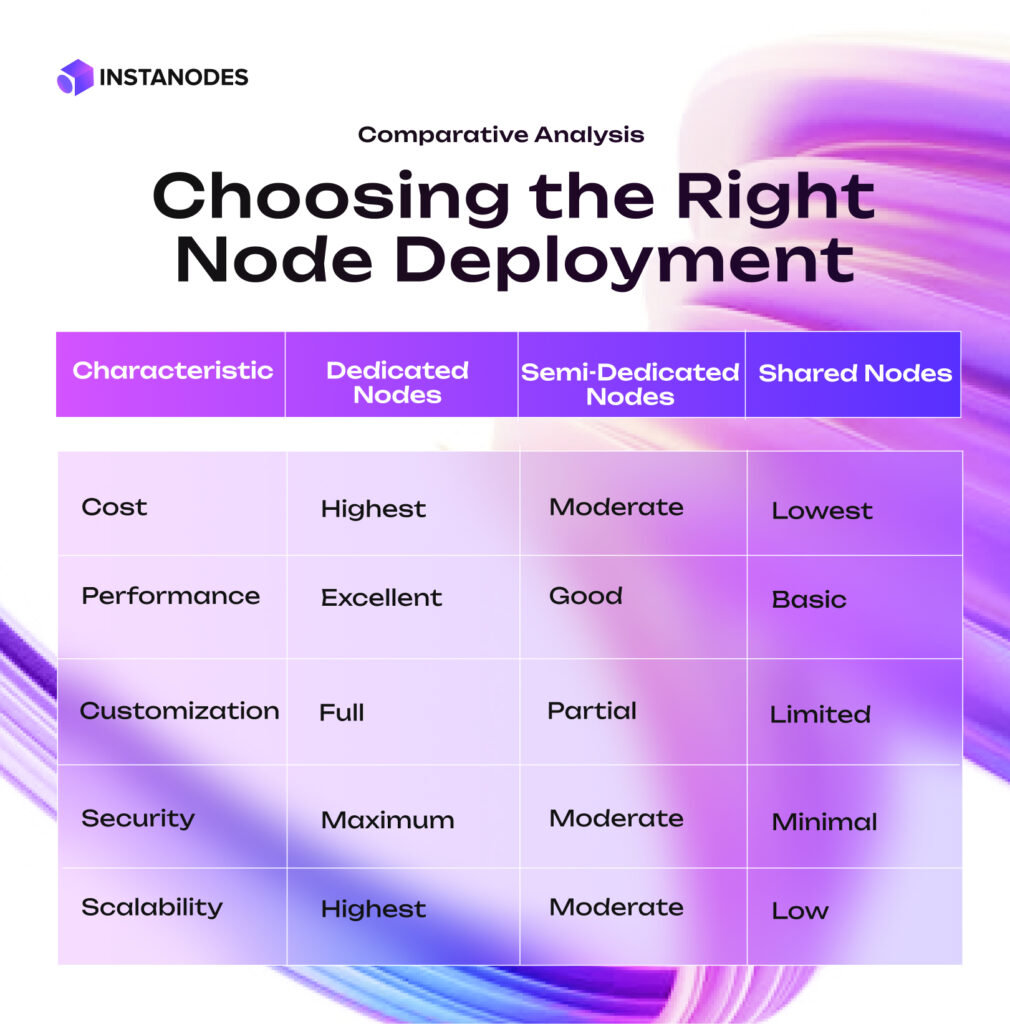
Factors to Consider When Selecting Node Deployment
When choosing a node deployment strategy, several critical factors come into play:
- Budget Constraints: Depending on your financial capacity, you may opt for dedicated nodes (higher cost but greater control) or shared nodes (cost-effective but lower performance). Assessing your budget helps in selecting the right node setup.
- Performance Requirements: High-throughput applications, such as DeFi protocols, may require dedicated or semi-dedicated nodes for reliable, fast transactions. Low-demand dApps can function efficiently on shared nodes.
- Scalability Requirements: As your project expands, your node infrastructure must scale effortlessly. Look for solutions that can handle horizontal and vertical scaling, particularly if you’re expecting greater user adoption.
- Security: With dedicated nodes, you get better security since they are not shared with other users. In case of applications dealing with confidential data, security takes center stage.
- Technical Expertise: Technical know-how is necessary to manage dedicated or semi-dedicated nodes. If your team is not skilled, it may be simpler to go with managed Node As A Service (NaaS).
- Specific Blockchain Network Demands: Different blockchains have varying node requirements. Ethereum nodes differ from Bitcoin nodes in terms of setup and maintenance. Ensure compatibility with your chosen blockchain.
Validator Nodes: Guardians of Consensus and Transaction Verification
Validator nodes in blockchain are responsible for blockchain consensus and security, particularly in PoS networks that drive most DeFi and L2 solutions. As opposed to Proof of Work (PoW) networks where miners compete to solve equations, validators stake tokens as collateral to gain the privilege of proposing and validating blocks.
The validator’s responsibilities include:
- Block Proposal: Once chosen, validators gather waiting transactions, validate them, and suggest a new block to include in the blockchain.
- Consensus Participation: Validators cast votes for suggested blocks, allowing only valid transactions to be confirmed and added.
- Security Enforcement: Validators are economically incentivized to act honestly by staking, as bad behavior can lead to punishment or loss of stake.
- Governance: Validators may engage in protocol governance through voting for changes or upgrades, thus impacting the future of the network.
This active role guarantees the integrity and finality of transactions, which is of fundamental importance for DeFi protocols where financial assets are at risk and for NFTs where provenance and authenticity are critical.
Resilience Through Distributed Networks: Eliminating Single Points of Failure
Decentralized design is one of the core strengths of blockchain, which removes single points of failure typical in conventional centralized systems. Rather than a central server, blockchain networks are run entirely using a distributed network of nodes scattered all over the world.
This distributed setup provides:
- Fault Tolerance: In case certain nodes shut down because of hardware failure, network problems, or attacks, the remaining nodes keep validating transactions and ensuring the ledger.
- Security Against Attacks: Decentralization provides challenges for attackers in terms of undermining the network through a single node or data center.
- Data Redundancy: There are several copies of the blockchain ledger stored on numerous nodes, making data available and secure even if some nodes are destroyed.
For NFT and DeFi platforms, this is the ability to have uninterrupted access to services and for their assets to stay safe even after localized breakdowns. Layer 2 solutions also get a boost since it is often reliant on the Layer 1 nodes and validators.
Performance Optimization: Nodes and the Scalability Challenge
Scalability remains a significant challenge for blockchain networks, especially as DeFi and NFT usage grow exponentially. Nodes must process increasing transaction volumes without compromising speed or security.
Layer 2 solutions such as rollups and sidechains mitigate this constraint by transferring transactions from the central chain. But nodes remain a crucial part of:
- Data Availability: Ensuring transaction data from L2s is posted and accessible on Layer 1 chains for security and finality.
- Cross-Chain Communication: Enabling cross-chain communication among L1 and L2 chains using dedicated nodes for messaging and proofs.
- Load Balancing: Running multiple nodes across various geographic locations and cloud providers to split traffic and prevent bottlenecks.
Optimizing node performance requires using high-performance hardware, efficient software stacks, and load balancing. Managed Node As A Service providers assist by providing scalable infrastructure with monitoring, automatic failover, and performance tuning specifically designed for high-demand blockchain applications.
Why Nodes Are Critical for Continuous Uptime in DeFi and NFTs
DeFi platforms and NFT marketplaces need to be available continuously to ensure user confidence and financial safety. Unavailability or delayed processing of transactions may result in lost money, canceled trades, or bad user experiences.
Nodes ensure continuous uptime by:
- Consensus Maintenance: Ongoing verification and dissemination of new blocks and transactions to synchronize the network.
- Supporting Wallets and dApps: Offering stable RPC (Remote Procedure Call) endpoints that wallets and decentralized applications use to communicate with the blockchain.
- Enabling Real-Time Data: Providing timely blockchain data to front-end interfaces, price oracles, and analytics tools essential for DeFi operations.
- Managing Failover: Redundant node configurations and failover ensure that service is not interrupted even if there are failed nodes.
Final Thoughts
The future of the blockchain ecosystem rests on healthy, speedy, and dependable node infrastructure. As things get more complicated and calls for scalability and performance grow, the role of nodes will only be more consequential.
For businesses and developers looking to leverage the newest blockchain technology, a reliable Node as a Service provider is no longer a luxury, it’s a requirement. Instanodes is on the cutting edge of this tech revolution, delivering end-to-end node solutions that allow businesses to navigate the complex world of blockchain with confidence.
Ready to revolutionize your blockchain infrastructure? Reach out to Instanodes today!
